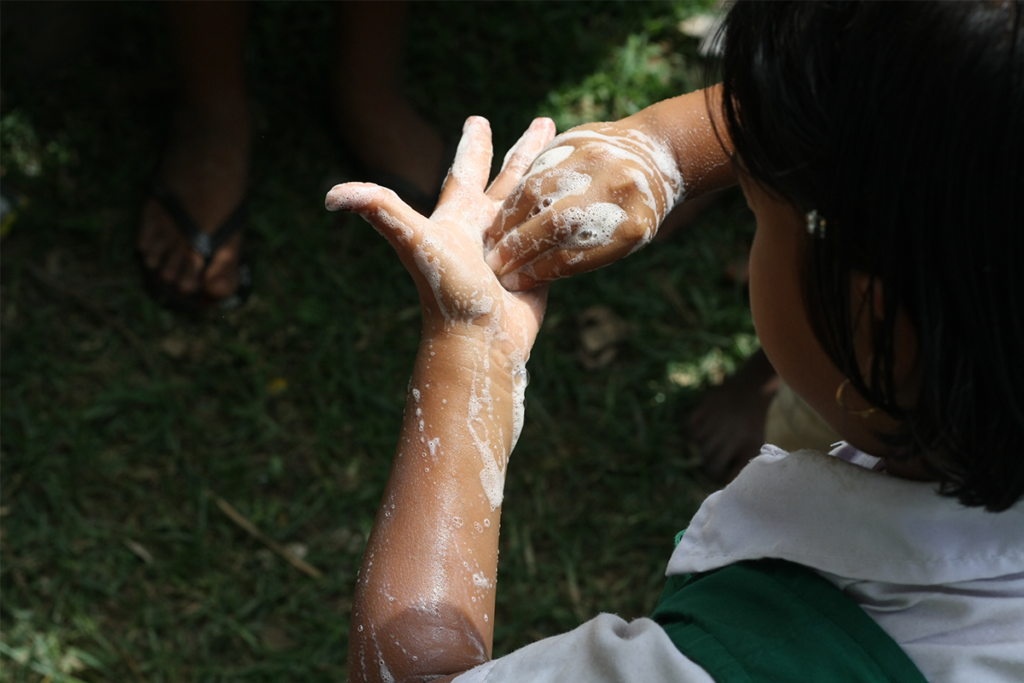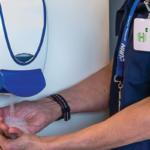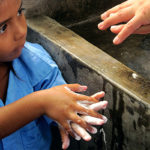The Global Handwashing Partnership is a coalition of organizations that work to promote handwashing with soap through knowledge sharing. Every year the Partnership publishes a Handwashing Research Index linking to newly published journal articles, which are sortable by tags, title, authors and countries. This year we decided to update the index after the first half of 2019. In this post, I describe our process for identifying handwashing research and provide highlights from the 36 new peer-reviewed articles.
The methodology
As described in my blog post highlighting the annual 2018 index, the handwashing community has seen an overall increase in publications since the first publication of our annual catalog in 2012. I also detailed our standard methodology in that post but let me summarize it here again.
I searched the NCBI databases to identify peer-reviewed articles for inclusion by filtering articles by publication date (between December 1, 2018, and May 31, 2019) and keywords in titles like handwashing, hand hygiene, hand disinfection, and low- and middle-income countries. I then manually screened the results further to include only research on handwashing. Members of the Global Handwashing Partnership Secretariat reviewed the filtered list for accuracy. Our search placed no limitations on languages, though in this particular index all articles appear in English.
We found 36 new peer-reviewed articles in the first half of 2019, which is a reduction from 49 articles in the same time span in 2018. Like the search results from the 2018 index, the majority of the articles (17 of the 36) covered handwashing in community settings. These studies in community settings span a range of topics, including child defecation and feces disposal in rural India, gender disparity in handwashing practices in Hong Kong, laboratory testing of an antimicrobial towel, and an evaluation of mass-scale media interventions on handwashing among mothers in India.
In addition to community settings, our index also catalogs articles by education, health care or emergency settings, as well as by other tags like nutrition, infant and young children, sanitation, water quality, or maternal health. In the next three sections, I summarize a few articles that I found interesting in community settings, as well as in education settings and health care settings.
Community settings
Two studies looked at neonatal sepsis – a blood infection in newborns less than 90 days old that is a leading killer in low-income countries. The use of alcohol-based hand rub is common in health settings to prevent infections, but less so in the home. Ditai et al. (2019) piloted a cluster randomized trial to assess the use of hand rub among new mothers at home and in the local community. In a follow-up study, Harrison et al. (2019) conducted focus group discussions in intervention villages to evaluate the acceptability of an educational hand hygiene poster in the family home. The researchers find the alcohol-based hand rub and poster to be well-received in the community, and the mothers described successfully persuading other caregivers and relatives to use the alcohol-based hand rub prior to handling their newborn.
The high prevalence of stunting and anemia among HIV-exposed infants led Prendergast et al. (2018) to enroll HIV-positive mothers in two rural Zimbabwe districts into a cluster randomized controlled trial to test “the effect of improved infant and young child feeding (IYCF) and improved water, sanitation, and hygiene (WASH) on child linear growth and hemoglobin concentrations.” The authors find that a complementary feeding intervention (both independently and combined) which promoted WASH behavior change and provided a daily calorie and micronutrient supplement improved linear growth and hemoglobin concentration in HIV-exposed children at 18 months old. The independent WASH intervention virtually eliminated open defecation in the trial arm but had no additional benefit on child growth. A household-level WASH intervention providing elementary WASH tools and monthly behavior-change communication showed no effect on growth or anemia and no consistent effect on diarrhea. These findings are similar to those reported in the HIV-unexposed children enrolled in the SHINE trial.
Educational settings
Only two studies (both gated) in the new index focus on handwashing in educational settings.
Pasewaldt et al. (2018) evaluated the impact of two school-based handwashing interventions – a hand hygiene curriculum and group handwashing station – using quantitative and qualitative pre- and post-intervention surveys in Kenya and Uganda. The researchers find both interventions increased students’ knowledge of: disease prevention, the purpose of soap, and critical moments for handwashing. They also find an increase in self-reported handwashing behavior.
Working with preschoolers ages 5 to 6 years in Hong Kong, Or, Ching and Chung (2019) evaluated whether hand hygiene compliance training can improve hand hygiene knowledge and if the training can reduce absenteeism due to influenza. The study began with a hand hygiene information session spanning four weeks, after which the researchers assessed hand hygiene performance using measurement tools – fluorescent stain gel, ultraviolet lamp and analysis using the National Institutes of Health (NIH) ImageJ software. Next, the researchers used parental reporting of symptoms and school records to track absenteeism from influenza. They find a decreasing trend in influenza-related absenteeism, in tandem with the decrease in fluorescent staining resulting from poor hand hygiene compliance.
Hand hygiene research in health care settings
Conclusion
I hope you find these articles as interesting as I do and that the reported data and insights are useful in your handwashing research work. The complete January to June 2019 Handwashing Research Index can be found here. Visit the Global Handwashing Partnership’s Resources Hub for more tools and updates, and make submissions following our guidelines.
A version of this post appeared in the Global Handwashing Partnership’s SoapBox and USAID’s Water Currents newsletters.
Special thanks to Dan Campbell (ECODIT Water CKM) for supporting curation and publication and Julia Rosenbaum (USAID WASHPaLs) for technical review.
Photo caption: A child trained by a local NGO demonstrates proper handwashing techniques using soap among his peers in Malda, West Bengal, India
Photo credit: © 2015 Birabrata Das/www.rchss.in, Courtesy of Photoshare



